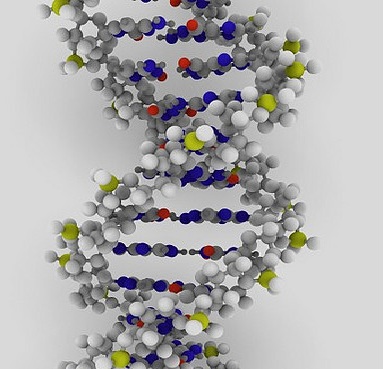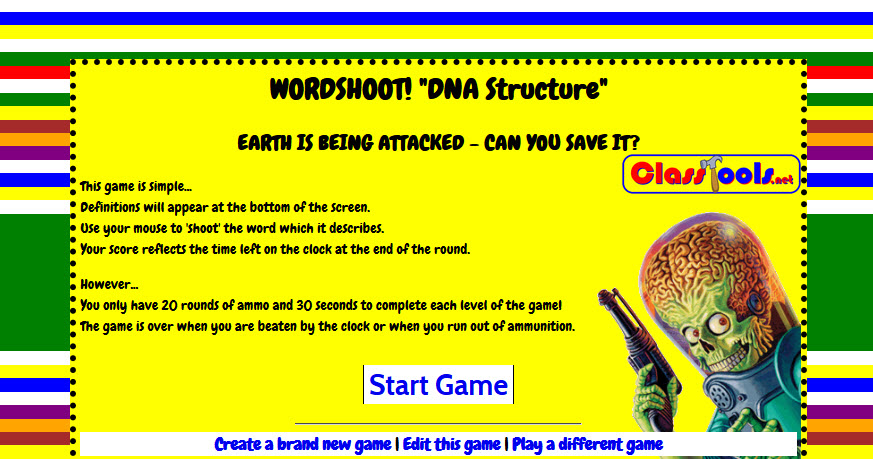DNA Structure
 Drawing the structure of DNA an IB Biology Exam
Drawing the structure of DNA an IB Biology Exam
Students learn how to draw the chemical structure of DNA with ease. Understand how the four bases in DNA pair together and the differences between DNA and RNA structure. Using a student activity sheet, with examiner's hints, a short screen cast, flashcards to help students' learn the labels and some other activities including DNA origami, building edible DNA from sweets and some arcade games about DNA structure.Lesson Description
Guiding Questions
What are the three essential components of a DNA molecule ?
What are the four nucleotide bases found in DNA?
Which molecule in cells is used for storage of genetic information?
Activity 1 Drawing nucleotides
Study the details on this diagram before answering the questions below.
Answer these ![]() Simple questions about the structure of DNA and RNA
Simple questions about the structure of DNA and RNA
Activity 2 Drawing the structure of DNA
Watch the following ![]() drawing DNA screencast showing how to draw the structure of DNA for an IB Bio exam.
drawing DNA screencast showing how to draw the structure of DNA for an IB Bio exam.
Complete the ![]() student worksheet where you will draw the diagram of DNA structure for yourself.
student worksheet where you will draw the diagram of DNA structure for yourself.
Remember to include labels for the structures you draw. Use bold pencil lines and try to keep size and shape consistent.
Activity 3 Study the labels
Remembering the labels for a diagram is important. Diagrams without labels lose marks in IB exams. Use the following DNA structure flashcards to help you. There are a variety of study modes in the drop down menu at the bottom.
Extension Activities - IB Questions, Edible DNA, Arcade game or Origami
Using understanding which is newly learned is a good way to help transfer it to the long term memory. Repeating an exercise after the lesson is one way to do this, but its always more interesting to do something a little different.
Choose one of these extension activities to consolidate learning:
 DNA structure - IB style questions
DNA structure - IB style questions- Build edible DNA "Have your DNA and Eat it too" University of Utah
- Print and fold this simple DNA Origami mode
- Play the following arcade game
Direct link to the game: http://www.classtools.net/mob/quiz_82/DNA_Structure_0dj6e.htm
![]()
Alternatively you can use this QRcode to play these games on a phone or tablet.
Teachers notes
This page is part of a series of lesson resources for the diagrams of the IB syllabus.
The simple diagram is designed especially as one which is easy for students to replicate under exam conditions. A more detailed diagram link is always given to support understanding and raise awareness of the beauty and complexity of biological systems.
Some students can learn a diagram and it's labels easily, but many students need help to remember the precise shapes and sizes of the parts of each diagrams, and they need practice to get the labels correct and to understand the labels. The resources on this page aim to help teachers support these students.
There are many ways to use this page.
- Students can work independently or as a group.
- The resources can be projected in the classroom or studied on a computer.
- Worksheets allow you to print as much or as little as you wish.
- Differentiation is possible, as students could follow their own learning pathways to the IB style questions.
- This is an excellent video illustrating the Nature of Science about the discovery of the structure of DNA.
It is 17 minutes long and includes key interactions between different scientists and the technology of X-ray crystallography.
A Suggested Lesson Plan.
Starter: 10 minutes
- Students complete the Diagram Activity worksheet while watching the Screencast as a whole class.
Main: 40 minutes
- Students study printed (or online) Flashcards to help memorizing of the labels.
- Students take a Quick test - to see how well they understand the labels.
- Students review the Screencast and attempt the diagram (with labels) from memory.
End: 10 minutes
- Plenary - students play the arcade game to further consolidate learning
- Differentiation - students who need additional time for main can continue independently.
- There are also two nice activities in the Resources section which could make a good end to the lesson. DNA origami and Edible DNA where students build a DNA molecule from sweets. This is always very popular with my students.
Homework
Complete the![]() DNA structure - IB style questions and / or the Origami DNA.
DNA structure - IB style questions and / or the Origami DNA.

 IB Docs (2) Team
IB Docs (2) Team

.jpg)
